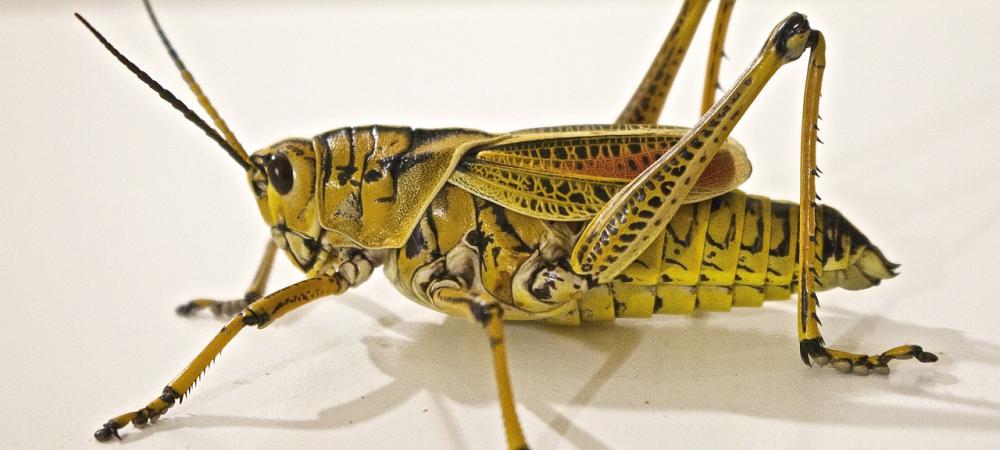Locust Bugs in Sacramento, CA

As the state capital of California and one of the most diverse ecosystems in the United States, Sacramento is home to various insects, but not necessarily locusts. Read on to learn more about grasshoppers and locusts.
Where do Locusts Live?
Locusts are found on every continent except Antarctica, and they inhabit a wide range of environments, from temperate grasslands to tropical forests and arid deserts. Their distribution varies among different species, and they can be found in regions with suitable conditions for their life cycle.
Regarding Sacramento, California, it is important to note that locusts are not native residents of the area. The city of Sacramento and its immediate surroundings are not known to be natural habitats for locusts. However, California, in general, is home to various grasshopper species, which are closely related to locusts but typically do not exhibit swarming behavior like true locusts.
What is a Locust?
A locust is a type of insect belonging to the family Acrididae, which is a subfamily of grasshoppers. Locusts are known for their ability to undergo behavioral and physiological changes in response to certain environmental conditions, particularly in relation to population density and food availability.
While locusts play an essential role in the ecosystem and have their place in nature, their swarming behavior can have disastrous consequences for agriculture and human livelihoods. As a result, managing locust populations and predicting and controlling potential outbreaks is essential to mitigate their impact as agricultural pests.
What Does a Locust Look Like?
A locust's appearance can vary depending on its species and its phase (solitary or gregarious). In the solitary phase, locusts resemble typical grasshoppers, while in the gregarious phase, they undergo significant changes in color and behavior to form swarms. Here are some general characteristics of a gregarious locust, which is the phase most commonly associated with locust swarms:
- Size: Locusts are medium to large-sized insects, typically ranging from 1 to 2 inches (2.5 to 5 centimeters) in length. Some species can be even larger.
- Body: A locust has a robust and elongated body divided into three main parts: the head, thorax, and abdomen.
- Color: In the gregarious phase, locusts often display striking color changes, with the appearance varying among species. Common colors include yellow, green, brown, and black. These color changes serve as visual signals that facilitate aggregation and coordination within the swarm.
- Wings: One distinguishing feature of a locust is its large and powerful wings. When not in use, the wings are folded along the back of the insect. The wings enable locusts to fly long distances during swarm migration.
- Legs: Like other grasshoppers, locusts have six legs adapted for jumping and hopping.
- Antennae: They have a pair of antennae on their head, which they use to sense their environment and detect odors.
Locust vs Cicada
Locusts and cicadas are distinct insects with different behaviors, appearances, and life cycles. Locusts can form swarms and undergo color changes, while cicadas are known for their periodic buzzing and have a longer underground nymph stage. Here is a summary of their differences:
- Taxonomy: Locusts are a type of grasshopper (Acrididae family, Orthoptera order), capable of forming swarms under certain conditions. Cicadas belong to the Cicadidae family in the Hemiptera order and are known for their loud buzzing sounds during mating.
- Behavior: Locusts can switch between solitary and gregarious phases, forming destructive swarms when conditions are right. Cicadas do not swarm and are known for periodic mass emergences.
- Appearance: In the gregarious phase, locusts may undergo dramatic color changes, while cicadas have transparent wings and stout bodies with bulging eyes.
- Life Cycle: Both undergo incomplete metamorphosis, but locust nymphs resemble adults, whereas cicada nymphs live underground for years before emerging as adults.
Locust Swarms
A locust swarm is a large group of locusts that come together and move as a cohesive unit. Swarming behavior in locusts is a result of specific environmental conditions, particularly an increase in population density and a decrease in food availability. When these conditions are met, solitary locusts can undergo significant changes in behavior, appearance, and physiology, transforming into gregarious locusts and forming swarms.
Getting Rid of Grasshoppers
While Sacramento does not have a widespread locust population, residents often deal with grasshoppers on their property. If you need Sacramento pest services, call Zap! We are a family-owned and operated company that’s been serving the area since 1976. Get a free quote today.
